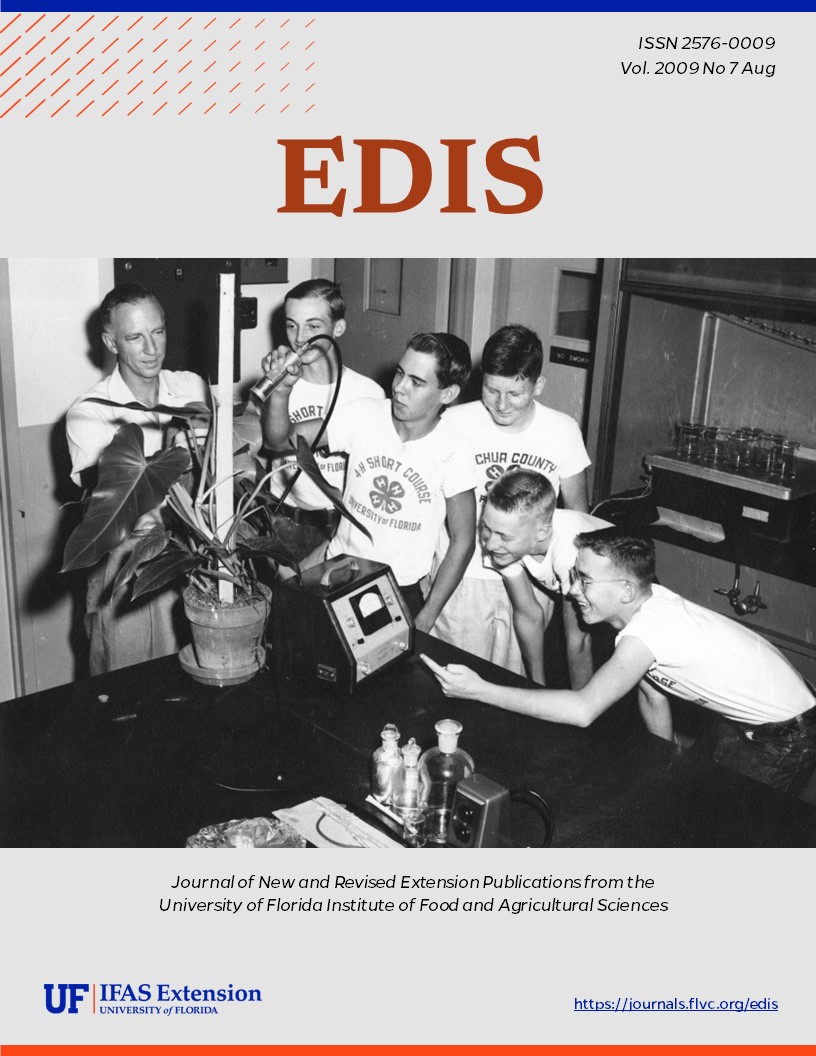Abstract
EENY-459, a 5-page illustrated fact sheet by Amanda Hodges and Greg Hodges, is part of the Featured Creatures collection. It describes this mealybug native to South America, which is sometimes confused with pink hibiscus mealybug, but has far fewer potential hosts — its synonymy, distribution, identification characteristics, life cycle, hosts, economic importance, and management. Includes references. Published by the UF Department of Entomology and Nematology, June 2009.
References
Granara de Willink MC. 1981. Nueva especies de Hypogeococcus Rau de Tucumán, República Argentina (Homoptera Pseudococcidae). (In Spanish; Summary In English). Neotrópica 27: 61-65.
Hamon AB. 1984. A cactus mealybug, Hypogeococcus festerianus (Lizer y Trelles), in Florida. Florida Department of Agriculture and Consumer Services, Division of Plant Industry. Entomology Circular 263.
Hodges A, Hodges G, Buss L, Osborne L. (2008). Mealybugs and mealybug look-alikes of the Southeastern United States. North Central IPM Center. http://www.ncipmc.org/alerts/phmb/mealybugs.pdf (19 June 2009).
Longo S. (2009). Personal Communication. University of Cantania in Sicily. Professor of Entomology Department.
McFadyen RE, Tomley AJ. 1981. The successful biological control of Harrisia cactus (Eriocereus martinii) in Queensland. pp 139-143. In Wilson BJ and Swarbrick JT. (Editors), Proceedings of the 6th Australian Weed Conference. Queensland Weed Society for the Council of Australian Weed Science Societies, Australia. 235 pp. (2 vols.)
Miller DR, Rung A, Venable GL, Gill RJ. (August 2007). Scale Insects: Identification tools, images, and diagnostic information for species of quarantine significance. Systematic Entomology Laboratory USDA-ARS. http://www.sel.barc.usda.gov/scalekeys/ScaleInsectsHome/ScaleInsectsHome.html (19 June 2009).
Moran VC, Zimmermann HG. 1991. Biological control of cactus weeds of minor importance in South Africa. Agriculture, Ecosystems, and Environment 37: 37-55. https://doi.org/10.1016/0167-8809(91)90138-N
Süss L, Trematerra P. 1986. Hypogeococcus festerianus (Lizer y Trelles), nocivo alle Cactacee ornamentali in Leguria. (In Italian). Informatore Fitopatologia 10: 43-46. https://doi.org/10.2307/746748
Unknown. (2006). Annual Report FY 2006. Hawaii Department of Agriculture. http://hawaii.gov/hdoa/meetings_reports/legislative-reports/2007LegReports/Appendix%204%20-%20PI%20Annual%20Rpt..pdf (19 June 2009).
Williams DJ. 1973. Two cactus-feeding mealybugs from Argentina (Homoptera, Coccoidea, Pseudococcidae). Bulletin of Entomological Research 62: 565-570. https://doi.org/10.1017/S0007485300005460
Williams DJ, Granara de Willink MC. 1992. Mealybugs of Central and South America. CAB International, London, England. 635 pp.

